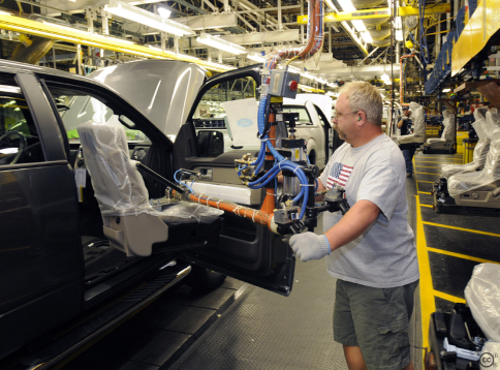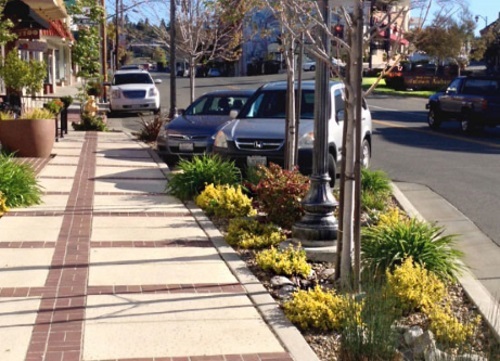FEDERAL ACTION
New EPA Rule Mandates 55 MPG by Model Year 2026 – AASHTO Journal
Four environmental fights to watch in 2022 – The Hill
White House and Congress Made Significant Strides in 2021 to Improve U.S. Flood Policies – Pew
Study: Spending infrastructure funds on highway expansion could increase emissions – The Hill
Coalition Letter on the Resilient AMERICA Act – US Chamber of Commerce
COVID-19
Omicron Suddenly Upends the World’s Return to the Office – CityLab
As Traffic Roars Back, Neighborhoods Outside Manhattan Feel the Pain – New York Times
INFRASTRUCTURE RESILIENCE AND SUSTAINABILITY
Golden Gate Bridge announces fix for noise nuisance – Marin Independent Journal
It’s ‘everyone’s job:’ Delaware offers more details on climate action plan – WHYY Radio
Experts Debate Where EV Charging Infrastructure Needs to Be – Government Technology
Caltrans to Require ‘Complete Streets’ Features in Planning and Design of All New Projects – California DOT (Media release)
AIR QUALITY
N.J. will now be able to follow California’s clean air standards for cars – NJ.com
Ports eliminating old trucks as a step toward improving air quality – Spectrum News 1
Public transit in rural Maine is sparse. Improving it could help the state fight climate change – Maine Public Radio
MassDEP Files New Regulations to Reduce Emissions, Advance Market for Clean Trucks in the Commonwealth – Massachusetts Department of Environmental Protection (Media release)
ENVIRONMENTAL JUSTICE
Racial reckoning turns focus to roadside historical markers – NPR
How Detroit’s inequitable transit costs Black Detroiters more – and what we can do to change it – Metromode
‘Universal Basic Mobility’ Speaks to a City’s Values – Government Technology (Commentary)
NATURAL RESOURCES
Florida manatee deaths: EPA sued over Indian River Lagoon water quality by Earthjustice – TCPalm
Why millions of dollars are being invested in local water quality, and the innovative way it’s being spent – NorthCentralPA.com
Minnesota’s cleaned-up lakes and rivers show path forward for polluted waters – Star Tribune
Mississippi projects aim at improving oyster reefs – AP
HEALTH AND HUMAN ENVIRONMENT/ACTIVE TRANSPORTATION
Bicycling alone, no more: Maine moves toward active transportation – Maine Monitor
FAA shoots down Lakeland’s first plan to reduce jet noise – The Ledger
I-74 bike and pedestrian path opening delayed to spring 2022 – KWQC-TV
After 10 years, Lake Street Bridge opens to pedestrians. What it means for downtown Elmira – Star-Gazette
Endangered species ruling puts bike lanes in jeopardy – Redlands Community News (Editorial)
Active Transportation Plan: A new compass to guide the state’s active transportation future – Washington State DOT (Media release)
TRB RESOURCES/ANNOUNCEMENTS
Options for Improving the Safety of DUKW Type Amphibious Vessels – TRB
Measuring and Managing Freight Resilience Workshop – TRB (Workshop Summary)
Partnerships and Cross-Sector Collaboration Priorities to Support Climate Research and Policy – National Academies of Sciences, Engineering, and Medicine (Workshop proceedings)
How We Move Matters: Exploring the Connections Between New Transportation and Mobility Options and Environmental Health – National Academies of Sciences, Engineering, and Medicine (Workshop proceedings)
FEDERAL REGISTER NOTICES
Transportation Research and Development Strategic Plan; Request for Information – USDOT (RFI)
Design Standards for Highways – FHWA (Final Rule)
On-Site Civil Inspection Procedures; Rescission – EPA (Final rule; rescission of regulations)
State of New Mexico Underground Injection Control Program; Primacy Revisions – EPA (Final rule)
Revised 2023 and Later Model Year Light-Duty Vehicle Greenhouse Gas Emissions Standards – EPA (Final rule)
Proposed Consent Decree, Clean Air Act Citizen Suit – EPA (Notice; request for public comment)
Air Plan Approval; California; San Joaquin Valley Unified Air Pollution Control District; Open Burning – EPA (Proposed rule)
Board of Scientific Counselors (BOSC)Safe and Sustainable Water Resources Subcommittee Meeting – January 2022 – EPA (Notice of public meeting)
Fire Safety of Small Passenger Vessels – Coast Guard, DHS (Interim rule)
Port Access Route Study: Northern New York Bight – Coast Guard (Notice of availability; final
report.)
Notice of Intent To Prepare a Resource Management Plan Amendment and Associated Environmental Assessment for an Alternate Route for the Gateway South Transmission Line at the Colorado/Utah Border – Bureau of Land Management (Notice)
Call for Nominations or Expressions of Interest for Solar Leasing Areas on Public Lands in the States of Colorado, New Mexico, and Nevada – Bureau of Land Management (Notice)
Hydrographic Services Review Panel – NOAA (Notice of call for nominations)
Intent To Request an Extension From OMB of One Current Public Collection of Information: Cybersecurity Measures for Surface Modes – DHS (60-Day notice)




